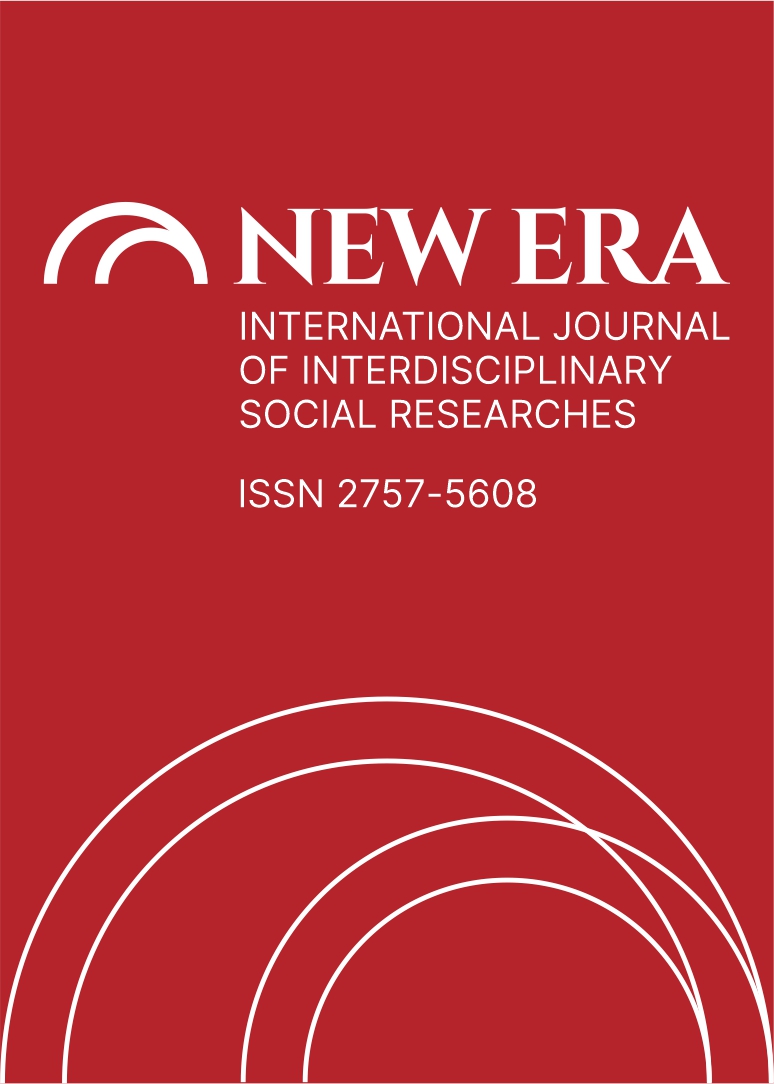THE LAST SYLLABLE OF THE LINE IN POEMS USING PROSODY
DOI:
https://doi.org/10.5281/zenodo.7441937Abstract
Prosody meter is basically a rhythmic harmony system specific to ancient Arabic poetry and compatible with Arabic syntax. With the spread of Islam, the Muslim communities adopted this rhythm and applied it in their own language. Prosody meter was applied more easily in Persian. Because there are long vowels in Persian. In Turkish, it has been very difficult to use the arud meter due to the long vowels, which are generally foreign. However, as a result of long efforts, Turkish desire was formed with its unique features, although many of its basic features remained the same. Although the theoretical works on Turkish prosody do not provide the detailed information we seek, the prosody savings in the poems are quite consistent. In this research, the syllables at the end of the verse, which are always used as closed syllables in arud meter, will be discussed. At the end of the verses, it is seen that the poets act sensitively and pay attention to even the smallest differences. The differences in the last syllables, which we all evaluate in the same way today, are actually shown in the arud tef'ile. Although the last syllable of the “fâ'ilât”, “fâ'ilân”, “fâ'ilün” tef'iles at the end of the meter is considered the same today and is passed off as a single closed syllable, it has different qualities. Likewise, the last syllables of the words “evvelâ / kula”, “gibi / habâb” at the end of the verse are considered equivalent in today's practice and are accepted as a single closed syllable. However, the different qualities in the last syllables are voiced with the savings required by the aruz prosody and an equivalence is provided in the reading. At this point, it is necessary to reconsider the fact that the last syllable is always closed ( _ ), which is one of the operations performed in the teaching of arud prosody. End-of-verse syllables are generally not considered when talking about savings such as imale, zihaf in the verse. However, the application of imale ve zihaf in the syllable should be shown even at the end of the verse. Due to the difference in the last syllables of the couplets encountered in Turkish poems, the definition of “poetry meter” may be incomplete. Because even the verses of the couplets other than the matla couplet, especially in the form of qasida and ghazal verse, can differ among themselves in terms of the last syllable. Therefore, it can be said that the definition of “meter of the verse” is a more accurate approach. Such an approach will also help to better understand Turkish arud prosody. Apart from the generalizations made to facilitate the teaching of arud prosody, attention to this issue will yield more accurate results in studies conducted with academic concerns.
References
ASLAN, Ü. (2021). “Aruz Fer’leri Arasındaki Farklar”, TÜRÜK Uluslararası Dil, Edebiyat ve Halkbilimi Araştırmaları Dergisi, 9/27, s.s. 58-82.
[ERSOY], M. Â. (1327). “Edebiyat Bahisleri: İnşâd”, Sırât-ı Müstakîm, VII/179, s.s. 358-360.
KARABURGU, O. (2006). “Şâir ve Şâir Nedim Mecmuaları Arasında Bir Hece-Aruz Tartışması”, Arayışlar, 8/15, s.s. 86-92.
KESİK, B. ve Şenödeyici, Ö. (2019). Aruz Teori ve Uygulama, İstanbul: Kesit Yayınları.
KILINÇ, A. (2021). Fuzûlî Dîvânı, İstanbul: Türkiye Yazma Eserler Kurumu Başkanlığı Yayınları.
KÖPRÜLÜ, F. (1999). Edebiyat Araştırmaları, Ankara: Türk Tarihi Kurumu Basımevi.
SARAÇ, M. A. Y. (2007). Klâsik Edebiyat Bilgisi Biçim-Ölçü-Kafiye, İstanbul: 3F Yayınevi.
ŞAFAK, Y. (1993). “Aruzu Niçin ve Nasıl Öğrenmeliyiz?”, Yedi İklim, 5/40, s.s. 11-15.
ŞAFAK, Y. (2000), “Fars ve Türk Aruzlarında Yeknesak ve Almaşık Vezinler”, Selçuk Üniversitesi Türkiyat Araştırmaları Enstitüsü Türkiyat Araştırmaları Dergisi, Sayı: 7, s.s. 187-232.
ŞAFAK, Y. (2003). Aruz Terimleri, Konya: Tekin Kitabevi.
UZUN, M. (2010). “Taktî’ (Türk Edebiyatı)”, Türkiye Diyanet Vakfı İslam Ansiklopedisi, Cilt: 39, s.s. 483.
ZÜLFE, Ö. (2011). “Aruz Vezinlerinin Gösterilmesi Üzerine Bazı Teklifler”, Modern Türklük Araştırmaları Dergisi, 8/1, s.s. 52-66.
ZÜLFE, Ö. (2016). Hecrî Kara Çelebi Muhyi’d-dîn Mehmed [ö. 1557] Dîvân, Ankara: Türk Dil Kurumu Yayınları.
Downloads
Published
How to Cite
Issue
Section
License
Copyright (c) 2022 NEW ERA INTERNATIONAL JOURNAL OF INTERDISCIPLINARY SOCIAL RESEARCHES

This work is licensed under a Creative Commons Attribution-NonCommercial 4.0 International License.


